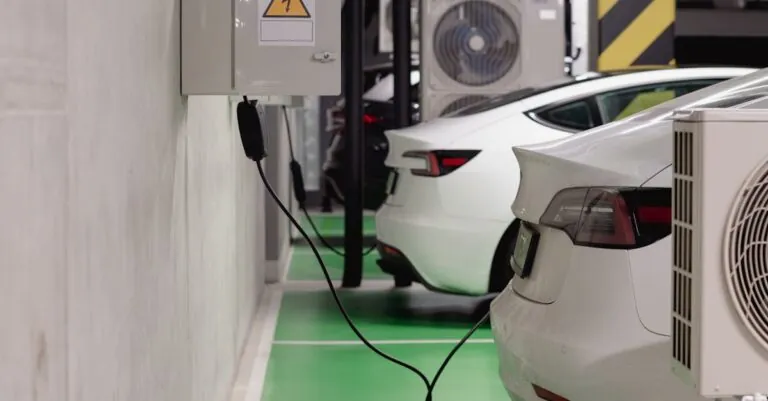Imagine a world where your coffee mug isn’t just a mug but a masterpiece crafted from the finest ceramics, all thanks to the magic of 3D printing. Ceramic 3D printing isn’t just a trend; it’s a revolution in the art of creating stunning, intricate designs that blend functionality with flair. Whether it’s for art, architecture, or everyday items, this technology is making waves and turning heads.
Table of Contents
ToggleOverview of Ceramic 3D Printing
Ceramic 3D printing combines advanced technology with traditional craftsmanship, resulting in unique design possibilities. This process utilizes materials like clay, porcelain, and other ceramic composites, enabling the production of complex shapes that standard techniques cannot achieve. Significant advantages include rapid prototyping and reduced material waste, making it an environmentally friendly option.
Applications span various sectors, including art, architecture, and industrial manufacturing, where customized components are often essential. Artists leverage ceramic 3D printing for creating intricate sculptures and practical items, while architects use it to design complex building elements. Companies benefit by producing specialized parts, such as heat-resistant components for aerospace industries.
Materials used in ceramic 3D printing require specific attention. Certain compounds, like alumina and zirconia, provide high strength and thermal resistance, enhancing durability. Moreover, the printing process typically involves techniques like binder jetting or material extrusion, which lay down layers to build the final piece. After printing, items usually undergo post-processing, which can include drying, firing, and glazing.
Challenges persist in achieving optimal resolution and surface finish, particularly with larger prints. To address this, ongoing research focuses on improving formula compositions and developing better printing systems. Innovations continually enhance the speed and quality of ceramic 3D printing, resulting in wider adoption across industries.
Ceramic 3D printing represents a significant shift in how designers create and manufacture items. It effectively merges artistry with modern technology, resulting in a new era of possibilities for designers and manufacturers alike.
Benefits of Ceramic 3D Printing
Ceramic 3D printing offers numerous advantages that enhance its application across various industries. This technology excels in delivering high precision and detail in designs.
High Precision and Detail
Ceramic 3D printing achieves exceptional accuracy, making it suitable for intricate designs and tiny components. Users benefit from the capability to produce complex geometries that traditional methods can’t replicate. The layering process allows for fine features and smooth finishes, which enhances aesthetic appeal. Manufacturers often rely on ceramic materials like alumina and zirconia to maintain structural integrity while providing high-resolution output. Since devices require precise dimensions for functionality, ceramic 3D printing addresses this need effectively.
Customization Opportunities
Customization stands out as a major benefit of ceramic 3D printing. Individuals and organizations gain the ability to create unique designs tailored to specific requirements. Personalization ranges from aesthetic elements like shape and color to functional attributes such as size and performance. Companies can respond to niche markets with bespoke products that traditional methods struggle to produce. Flexibility in design allows artists to experiment with styles while ensuring that each piece is distinct. Furthermore, prototypes can be developed rapidly, enabling quicker iterations and refinement of ideas.
Applications of Ceramic 3D Printing
Ceramic 3D printing finds diverse applications across multiple fields, showcasing its versatility and innovative potential.
Medical Devices
Medical devices benefit significantly from ceramic 3D printing. Custom implants crafted from biocompatible ceramics promote better integration with bone tissues. Surgeons can utilize precise models for surgical planning, enhancing patient outcomes. Furthermore, the technology allows for the design of complex geometries that address specific medical needs, such as porous structures aiding in tissue regeneration. Notably, 3D-printed ceramic components offer increased strength and durability, vital features for long-lasting medical solutions.
Aerospace Components
Aerospace components also leverage the advantages of ceramic 3D printing. With lightweight materials and intricate designs, manufacturers achieve reduced overall weight while maintaining structural integrity. Engineers create components capable of withstanding extreme temperatures and harsh environments through advanced ceramic materials like zirconia. Customized parts produced using this technology enhance performance and reliability, which are critical in aerospace applications. Emphasis on rapid prototyping accelerates development cycles, allowing for efficient testing and iteration of innovative designs.
Artistic Creations
Artistic creations thrive with ceramic 3D printing, merging technology and creativity. Artists craft intricate sculptures and custom pottery, producing unique pieces unattainable through traditional methods. The versatility of ceramic materials enables a broad range of artistic expressions, from delicate, detailed forms to bold, robust structures. Unlimited customization options encourage artists to experiment, fostering innovation in design. This approach supports a new wave of artistic exploration, where creativity meets advanced manufacturing techniques.
Challenges in Ceramic 3D Printing
Ceramic 3D printing faces several significant challenges that impact its broader application in various industries.
Material Limitations
Materials like clay and porcelain present unique challenges in 3D printing. Both types may not achieve the same flexibility as plastics, which limits their applications. Not all ceramic materials feature the same properties, like strength and thermal resistance, making it essential to choose the right material for specific needs. Printing techniques may also restrict the variety of ceramics that can be used effectively. The resolution and surface finish often fall short of expectations, requiring careful selection and preparation of materials to optimize outcomes.
Production Costs
Costs associated with ceramic 3D printing can hinder widespread adoption. Equipment and setup expenses tend to be higher compared to other manufacturing techniques. Post-processing steps, such as drying and firing, add time and labor costs. The complexity of designs often necessitates more sophisticated machinery, increasing upfront financial investment. While mass production may lower costs, many ceramic 3D printing applications remain small scale, limiting economies of scale that minimize overall prices.
Conclusion
Ceramic 3D printing stands at the intersection of technology and artistry, offering a wealth of possibilities across various industries. Its ability to produce intricate designs with high precision makes it a game-changer in fields like art, architecture, and medicine. While challenges remain in material properties and production costs, ongoing advancements promise to enhance its capabilities and broaden its applications. As this technology continues to evolve, it’s clear that ceramic 3D printing will play a crucial role in shaping the future of design and manufacturing, fostering creativity and innovation like never before.




